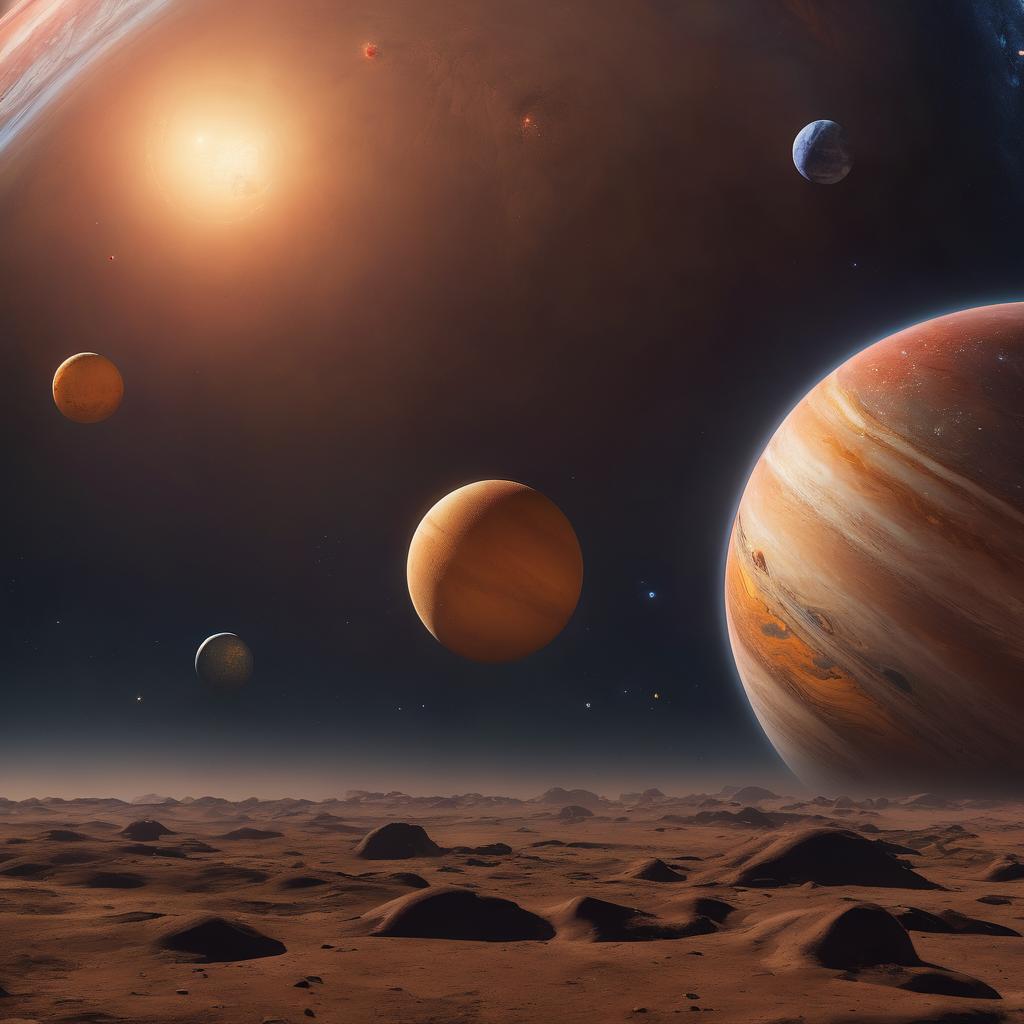
planetary-science - Details of the Course
Planetary science is a multidisciplinary field that investigates the structure, composition, dynamics, and evolution of planets, moons, asteroids, and other celestial bodies within our solar system and beyond. It combines elements of astronomy, geology, atmospheric science, and other disciplines to gain insights into the origin and development of planets, as well as the conditions that support or inhibit the existence of life on other worlds.
Introduction
Planetary science is like a treasure hunt in space, where scientists study all the amazing things in our solar system and beyond. It's a captivating field that uncovers the secrets of planets, moons, asteroids, and comets. Whether it's the rocky landscapes of Mars or the icy realms of the outer gas giants, each celestial body has its own unique story waiting to be discovered. Planetary scientists use a mix of observations, computer modeling, and advanced technology to understand these distant worlds. This introduction sets the stage for exploring various planetary science topics, like how we deal with objects that come close to Earth and whether other planets might be suitable for life.
Planetary Defense
Planetary defense is a super important part of planetary science. It's all about protecting Earth from potential dangers like asteroids and comets that might come too close. If one of these celestial objects were to hit our planet, it could be really bad. So, planetary defense is like a safety plan that involves finding, tracking, and studying these near-Earth objects (NEOs) to understand the risks they pose. Scientists then come up with creative ways to prevent or reduce the impact if a dangerous NEO is detected. This shows how planetary scientists are actively working to keep our planet safe.
Planetary Resources
The idea of using resources from other planets is an exciting new frontier in planetary science. Scientists are actively researching ways to extract and use materials from celestial bodies like asteroids and lunar soil. This effort isn't just about exploring space; it has the potential to solve resource shortages on Earth in a sustainable way. Studying planetary resources brings together scientific curiosity, technological innovation, and the practical need to secure our future in space.
Planetary Habitability
Planetary habitability is a big focus in planetary science, where scientists study what conditions make celestial bodies suitable for life. While Earth is the only known habitable place nearby, scientists are carefully figuring out what factors affect habitability. Things like how far a planet is from its star, what its atmosphere is made of, and whether it has liquid water are crucial factors in determining if a place could support life.
Planetary Tectonics
Planetary tectonics is a fascinating aspect of planetary science that delves into the geological processes responsible for shaping the surfaces of celestial bodies. While Earth has active plate tectonics, other planets and moons in our solar system experience tectonic activities through unique mechanisms specific to their environments. Studying planetary tectonics helps us peer into the inner workings and long-term changes of these celestial bodies, providing valuable insights into how their landscapes are formed.
Volcanism on Planets
Volcanism is a captivating field in planetary science that helps us understand the explosive processes that shape the surfaces of planets, moons, and dwarf planets. From the flowing lava on Venus to the icy geysers on Enceladus, volcanic activity plays a vital role in shaping the landscapes and atmospheres of celestial bodies. Studying volcanoes goes beyond just watching them; it provides crucial insights into a celestial body's geological history, its potential to support certain atmospheric and geological phenomena, and the broader processes that shape planetary systems.
supernovae
A supernova is a spectacular event in space that happens when a massive star reaches the end of its life. It goes out with a bang in a massive explosion. This happens because the star's core runs out of fuel, causing it to collapse and then bounce back, blowing off its outer layers into space. The energy released during this explosion can be so bright that it outshines entire galaxies. After the explosion, what's left behind can become either a neutron star or a black hole.
Planetary Missions
Planetary missions are incredible feats of technology that allow us to explore the solar system and uncover the secrets of distant celestial objects. These ambitious missions involve sending spacecraft equipped with advanced instruments to closely study planets, moons, and asteroids with incredible precision. For example, we have rovers like Curiosity exploring the surface of Mars and orbiters like Juno studying Jupiter's atmosphere. Each mission gathers a wealth of data, expanding our understanding of planetary geology, composition, and atmospheric conditions.
Planetary Magnetospheres
The study of planetary magnetospheres focuses on the protective magnetic fields that surround celestial bodies, affecting how they interact with the solar wind and cosmic radiation. For example, Earth's magnetosphere is vital for deflecting charged particles from the solar wind and creating the stunning auroras seen near the poles. By examining the magnetic environments of various planets, we gain important insights into their geophysical processes, how their atmospheres might escape into space, and whether they could support life.
conclusion
In summary, planetary science is an interdisciplinary journey that unveils the cosmic story within our solar system and beyond. Exploring topics like planetary defense, resources, habitability, tectonics, and volcanism highlights the depth and breadth of this field, showcasing how interconnected processes shape the destinies of celestial bodies. As humanity advances its knowledge through cutting-edge research and space missions, planetary science continues to lead the way in uncovering the cosmic narrative and revealing the secrets of the planets and moons around our Sun. The diverse and dynamic nature of planetary science makes it a cornerstone in our quest to understand the vast universe, inspiring ongoing exploration and discovery.